I started in Murugan Chawl in Santa Cruz West, where I found partners in Raja and Reshma Keshavan. Well networked in the larger community, they managed every aspect of the work efficiently and creatively.
We had a basic team of 10 boys, but almost all the teenagers of the area got involved. I had intended for the image to emerge from its makers. Using tarpaulin opened up a whole new approach to the act of image making. Our palette was chosen for maximum contrast, each rooftop a single block of colour or pixel.

Murugan Chawl on April 15 and then a fortnight later.
We talked about a game-board or puzzle coming together. The abstract nature of the composition made various participants see it differently. We would discuss their views and the final graphic decisions were made on site in real time, using phone cameras and WhatsApp.
Thus far, we have worked on three sites: on 168 homes in Murugan Chawl, 224 homes next to Rang Shardha on Bandra Reclamation and approximately 400 homes in the settlement next to it. The work at Bandra Reclamation wasn't easy: it was a difficult terrain, and we had our material stolen and burnt. In addition, the torrential winds that precede the monsoon made it difficult to work.
But the work ethic and irreverent humour of the boys who laboured away in tough conditions made my task fun. The most enduring aspect of the whole project has been the new pride that the people take in their location. The idea of marking their own home on a Google map using satellite view is a constant theme in my conversations with residents in the areas.
This project does not imagine it can bridge the divides in the city. We only demonstrate that our ideas and ability to adapt and provoke make us resilient. I believe that the narrative of Mumbai should not be defined by its most privileged, but subverted by its most inventive.

An unoccupied building overlooks the Chawl. Built more than 15 years ago to rehouse slum dwellers, the community is still negotiating with the builder.
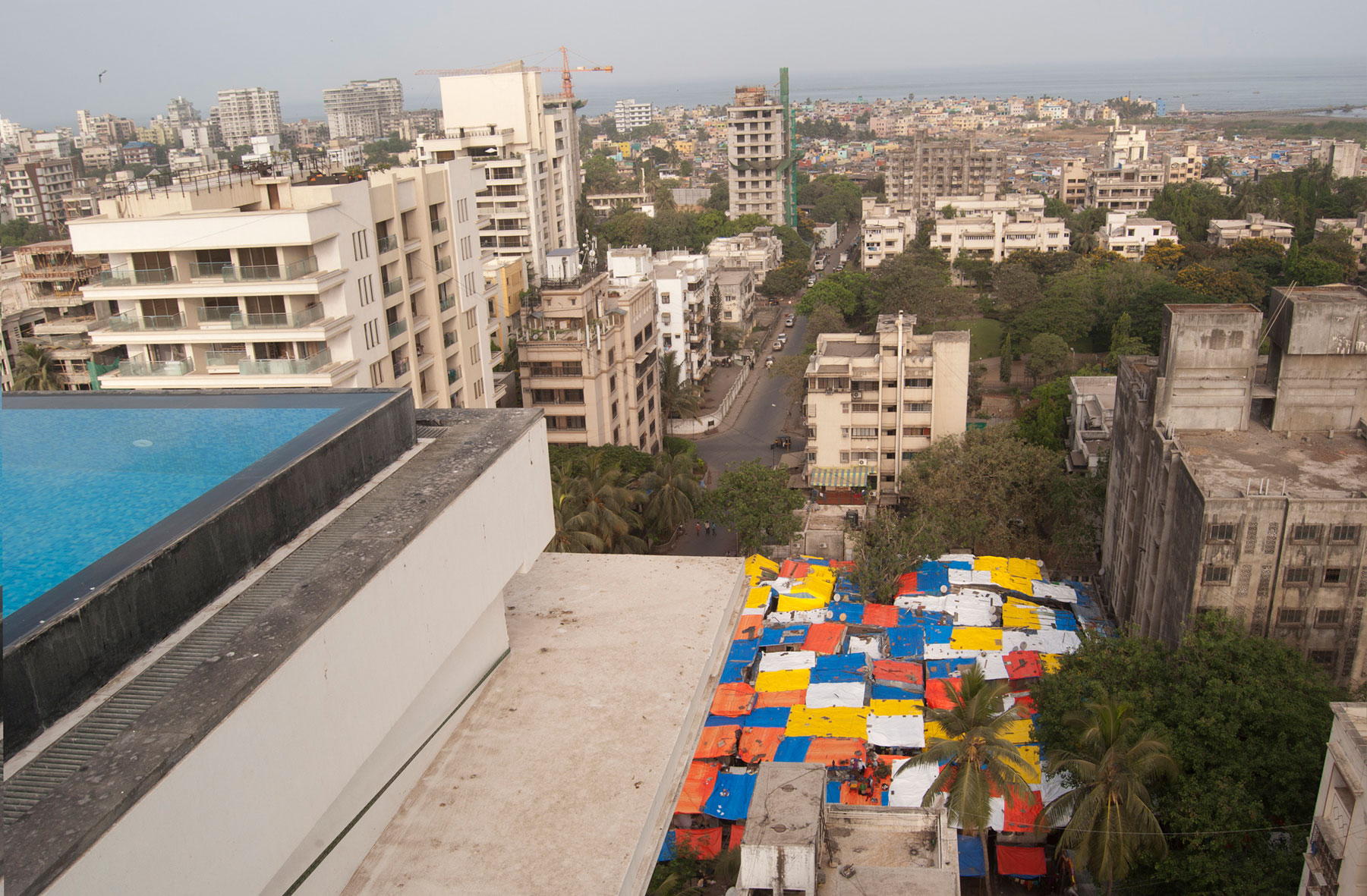
View from the infinity pool of a penthouse. The building is almost complete and has yet to be occupied.
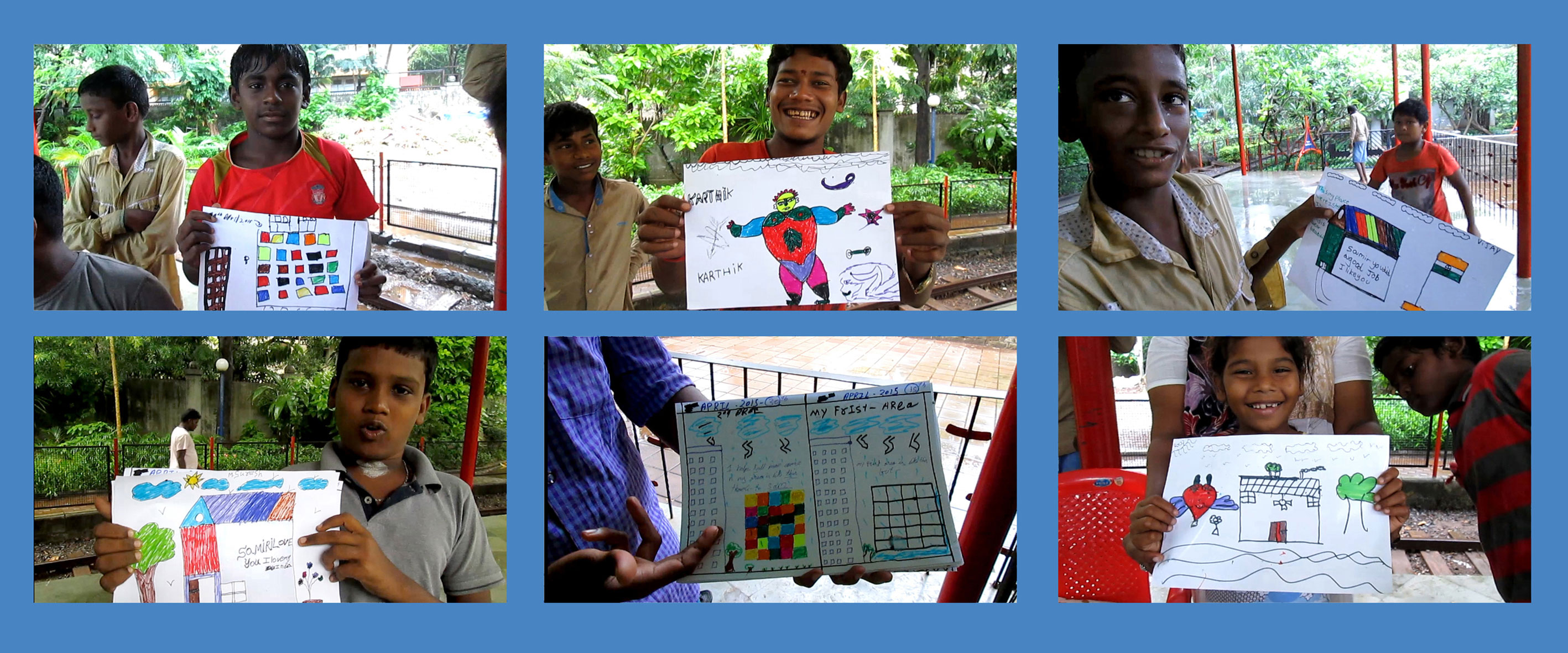
The installation has encouraged a sense of pride in the area and some of the young residents have been creating their own interpretations of their settlements.
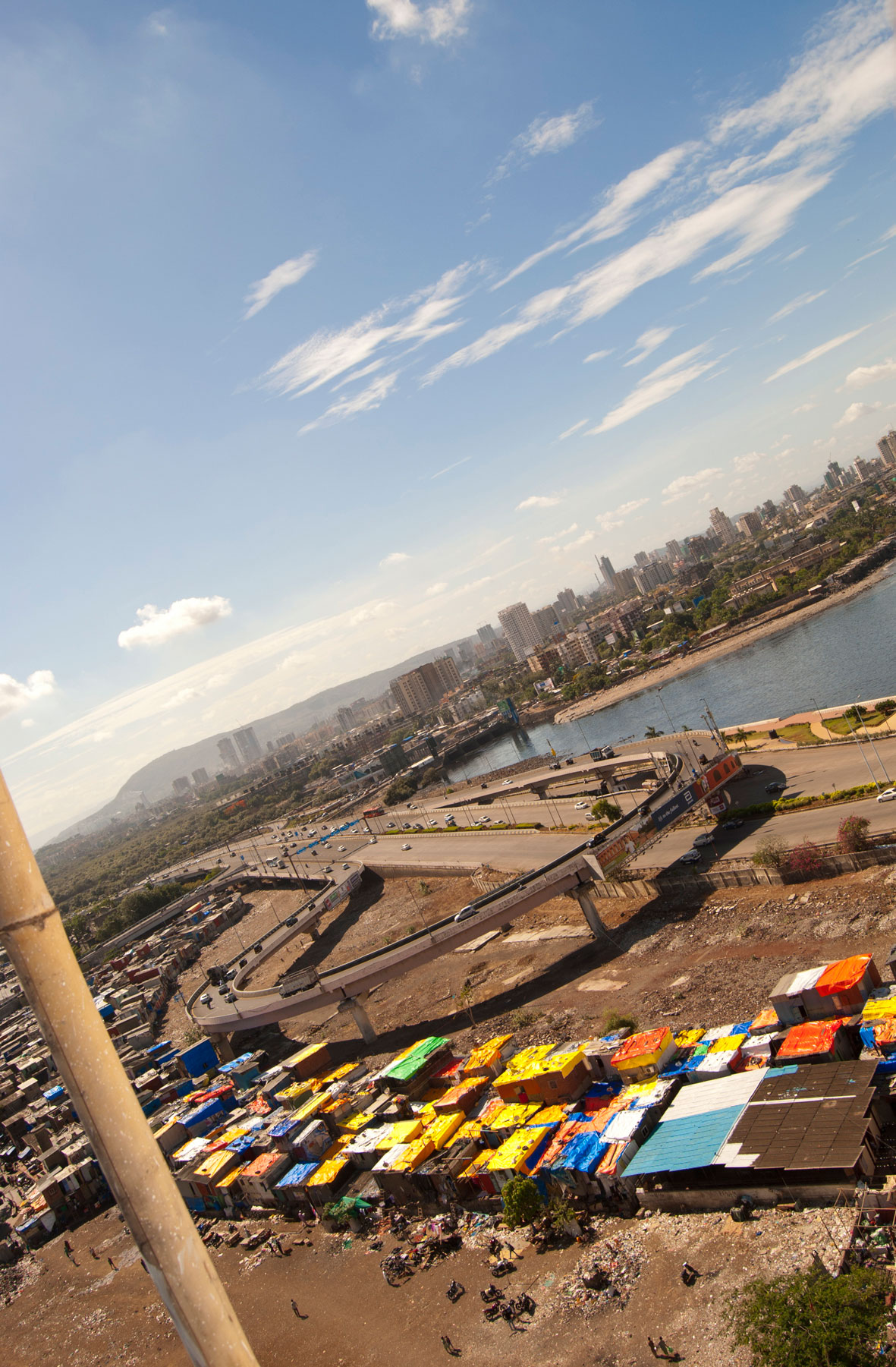
The success of the first site led to an ambitious venture in a prominent location at Bandra Reclamation.
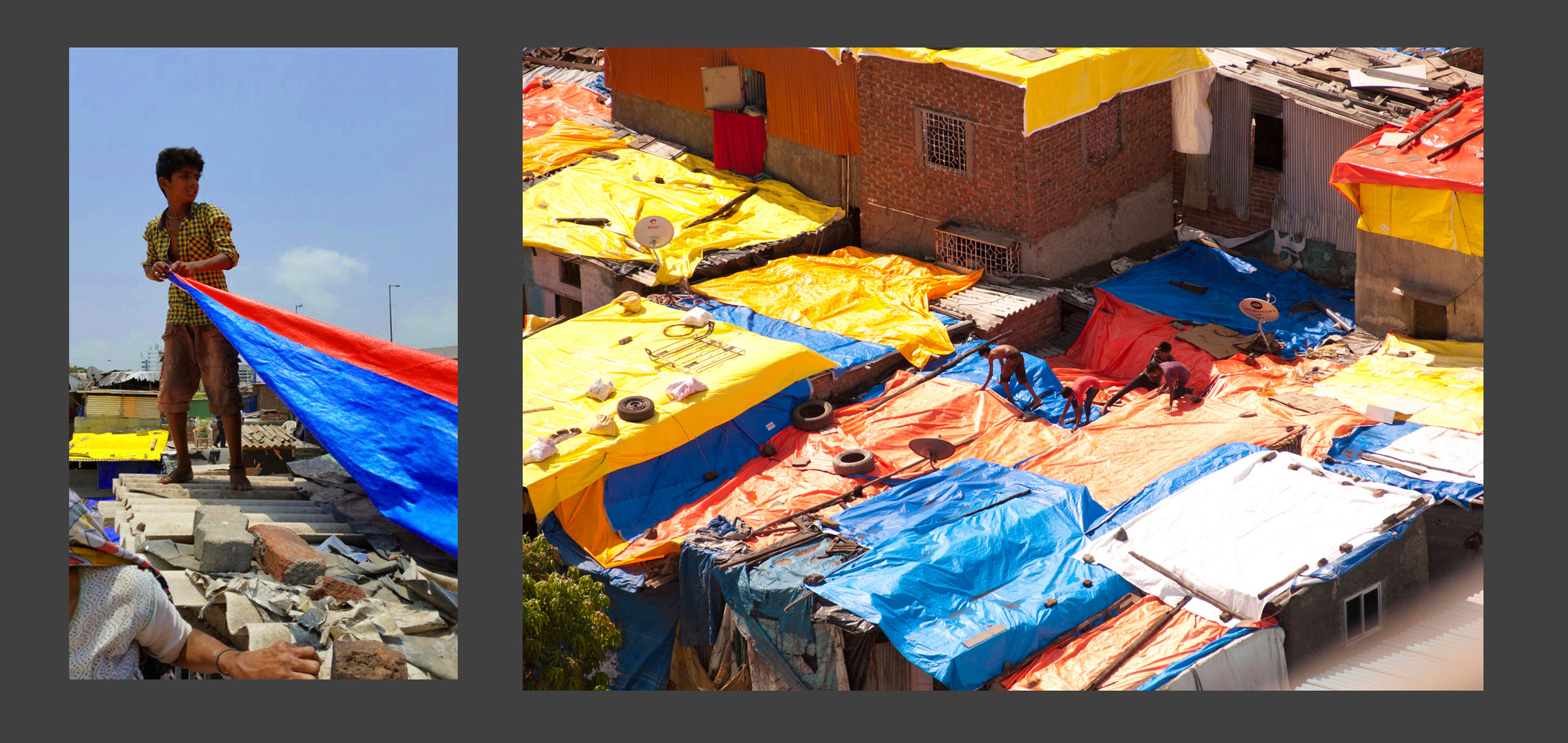
The strong winds made it difficult to handle and tie down the tarpaulin.
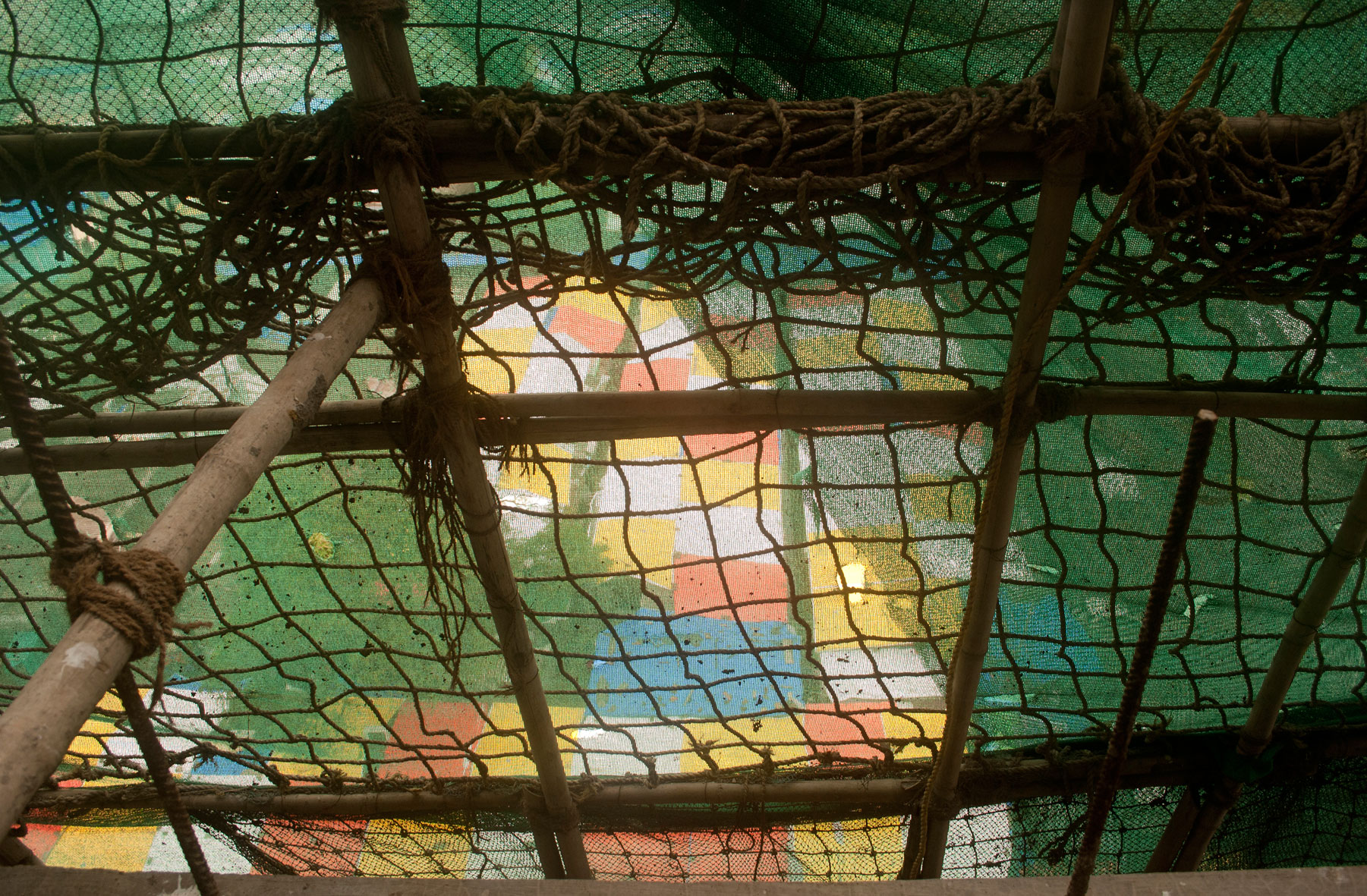
The view from an apartment under construction recently bought by a cricketing star.

The Rang Sharda site was much more accessible, and the team responded with its neatest effort yet.
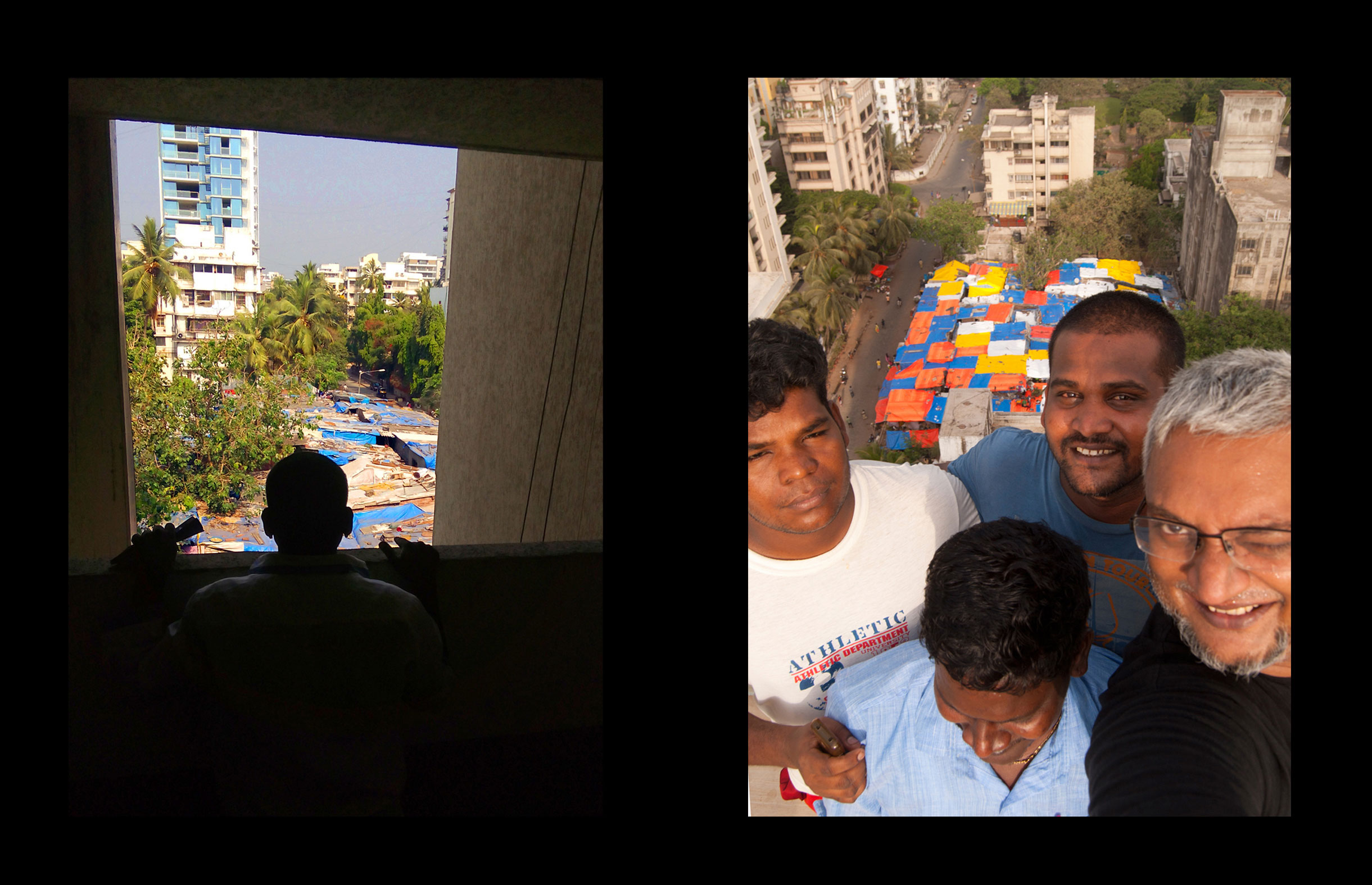
From the initial survey to completion. Selfie with Bonda, Kumar and Raja.
For more photographs, visit Roof TarpCity's Facebook page. This project was funded by a grant from the Alliance of Artist Communities, supported by the Rockefeller Foundation.










